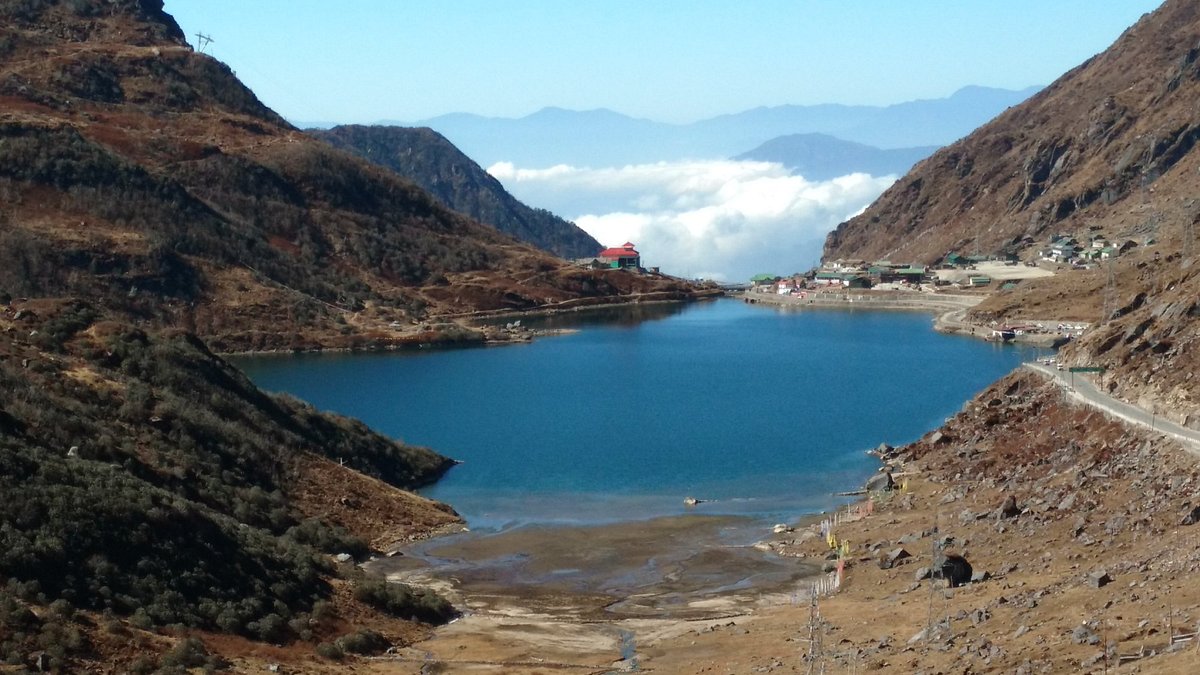
Tsomgo Lake, also known as Changu Lake, is a breathtaking glacial lake located at an altitude of about 12,310 feet in East Sikkim, around 40 kilometers from Gangtok. Surrounded by rugged mountains and steep snow-covered slopes, the lake changes colors with the seasons—turquoise in summer, deep blue in winter, and sometimes completely frozen. The pristine waters, fed by melting snow from the surrounding peaks, create a mesmerizing view that leaves visitors in awe.
The lake holds great cultural and spiritual significance for the local people. It is considered sacred by the Sikkimese, and legends link it to ancient Buddhist monks who used its waters to predict the future. Nearby, you can also find a small temple dedicated to Lord Shiva, adding to the spiritual atmosphere of the site. Prayer flags fluttering in the crisp mountain breeze further enhance the serene and mystical ambiance.
Wildlife and vegetation around Tsomgo Lake are equally fascinating. The area is home to rare species such as the red panda and Himalayan monal, while in spring, the surrounding slopes come alive with vibrant blooms of rhododendrons and primulas. For adventure seekers, yak rides along the lake’s banks offer a unique experience against the stunning mountain backdrop.
Best time to visit: March to May and October to December
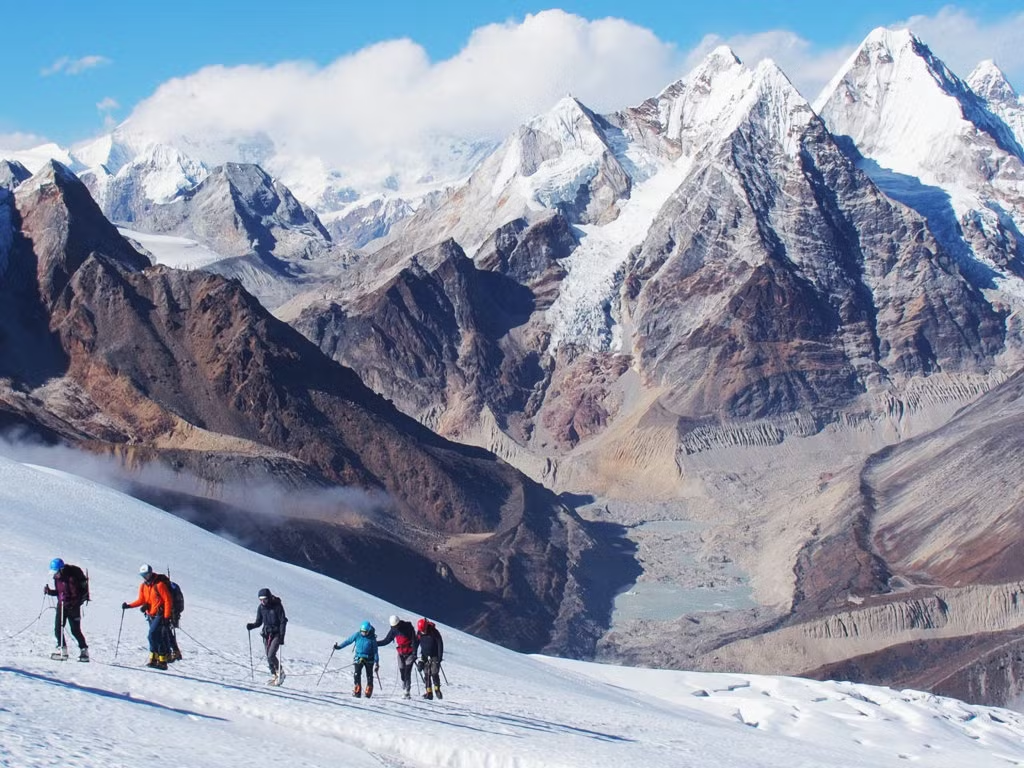
Kanchenjunga Base Camp is one of the most thrilling and scenic trekking destinations in Sikkim, offering breathtaking views of the world’s third-highest mountain, Mt. Kanchenjunga, which rises majestically at 8,586 meters. Located in the remote and pristine landscapes of the Himalayas, the base camp trek takes adventurers through lush forests, alpine meadows, sparkling rivers, and rugged terrains. The route is filled with awe-inspiring panoramas of towering peaks, glaciers, and the untouched beauty of the Eastern Himalayas.
This trek is not just about natural beauty—it’s also a cultural journey. Along the way, trekkers pass through traditional Sikkimese villages inhabited by Lepcha and Bhutia communities, experiencing their warm hospitality, unique customs, and age-old traditions. Ancient monasteries, prayer flags, and chortens dot the landscape, offering spiritual moments in the midst of challenging climbs.
Flora and fauna enthusiasts will find the trail rewarding, as it passes through the Kanchenjunga National Park, a UNESCO World Heritage Site. The park is home to rare species like the snow leopard, red panda, Himalayan black bear, and exotic high-altitude birds. In spring, the region bursts into vibrant colors with rhododendrons, magnolias, and orchids in full bloom.
Reaching Kanchenjunga Base Camp is an adventure that demands both physical endurance and a love for the wild. The remote trails, crisp mountain air, and jaw-dropping vistas make the journey unforgettable for seasoned trekkers and mountain lovers. The sense of achievement upon standing at the base of the mighty Kanchenjunga is truly unmatched.
Best time to visit: March to May
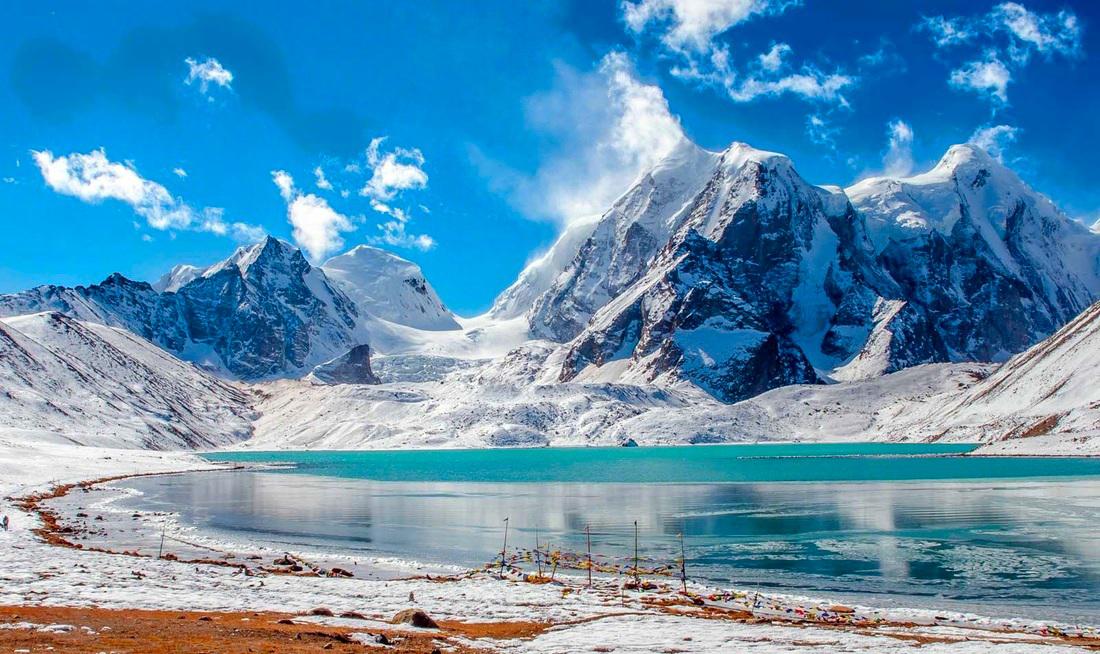
Gurudongmar Lake, situated at an altitude of about 17,800 feet in North Sikkim, is one of the highest lakes in the world and a jewel of the Himalayas. Surrounded by snow-capped peaks and breathtaking landscapes, the lake is named after Guru Padmasambhava, who is believed to have blessed it during his visit to the region. The shimmering turquoise waters against the stark, rugged terrain create a mesmerizing view that leaves visitors spellbound.
This sacred lake holds immense spiritual significance for Buddhists, Sikhs, and Hindus alike. Local legends state that a portion of the lake never freezes, even in extreme winter, due to the blessings it received. Pilgrims and travelers often collect the lake’s holy water, believing it to possess healing powers. The stillness of the surroundings, combined with the clear mountain air, makes it a place of peace and reflection.
Reaching Gurudongmar Lake is an adventure in itself. The journey takes travelers through winding roads, high mountain passes, and charming villages, offering glimpses of the unique culture of North Sikkim. While the route is challenging due to its altitude, the panoramic views of the Himalayas and the vibrant Buddhist prayer flags fluttering in the wind make it all worthwhile.
For nature lovers and photographers, Gurudongmar Lake is a paradise. The changing colors of the water under different light conditions, the pristine atmosphere, and the sheer sense of remoteness make it an unforgettable destination. However, due to the high altitude, visitors are advised to acclimatize properly before visiting.
Best time to visit: April to June and September to November

Goechala, located in the state of Sikkim, is one of India’s most famous high-altitude mountain passes and a dream destination for trekkers. Situated at an elevation of about 16,200 feet, it offers awe-inspiring views of the mighty Kanchenjunga, the third-highest mountain in the world. The trek to Goechala is known for its dramatic landscapes, ranging from dense rhododendron forests and alpine meadows to snow-covered trails and glacial lakes. Every turn along the route feels like stepping into a postcard-perfect Himalayan scene.
The region holds a special charm for adventure seekers and nature enthusiasts alike. During the trek, travelers get to witness the breathtaking sunrise over Kanchenjunga from viewpoints like Dzongri, where the golden rays paint the snow peaks in spectacular colors. Along the trail, you may also encounter diverse wildlife, including exotic birds and rare Himalayan species, adding to the thrill of the journey.
Goechala is not just about the destination but the entire trekking experience. Starting from Yuksom, the trail winds through quaint villages, sacred monasteries, and pristine valleys, giving trekkers a glimpse into the rich culture of Sikkim. Interactions with the warm-hearted locals make the journey even more memorable, and their hospitality reflects the deep-rooted traditions of the region.
This trek requires good physical fitness and preparation due to its altitude and long distances, but the reward is unmatched. Standing at the pass and gazing at the towering peaks, surrounded by the silence of the mountains, is a moment that stays etched in the heart forever.
Best time to visit: April to June and September to November
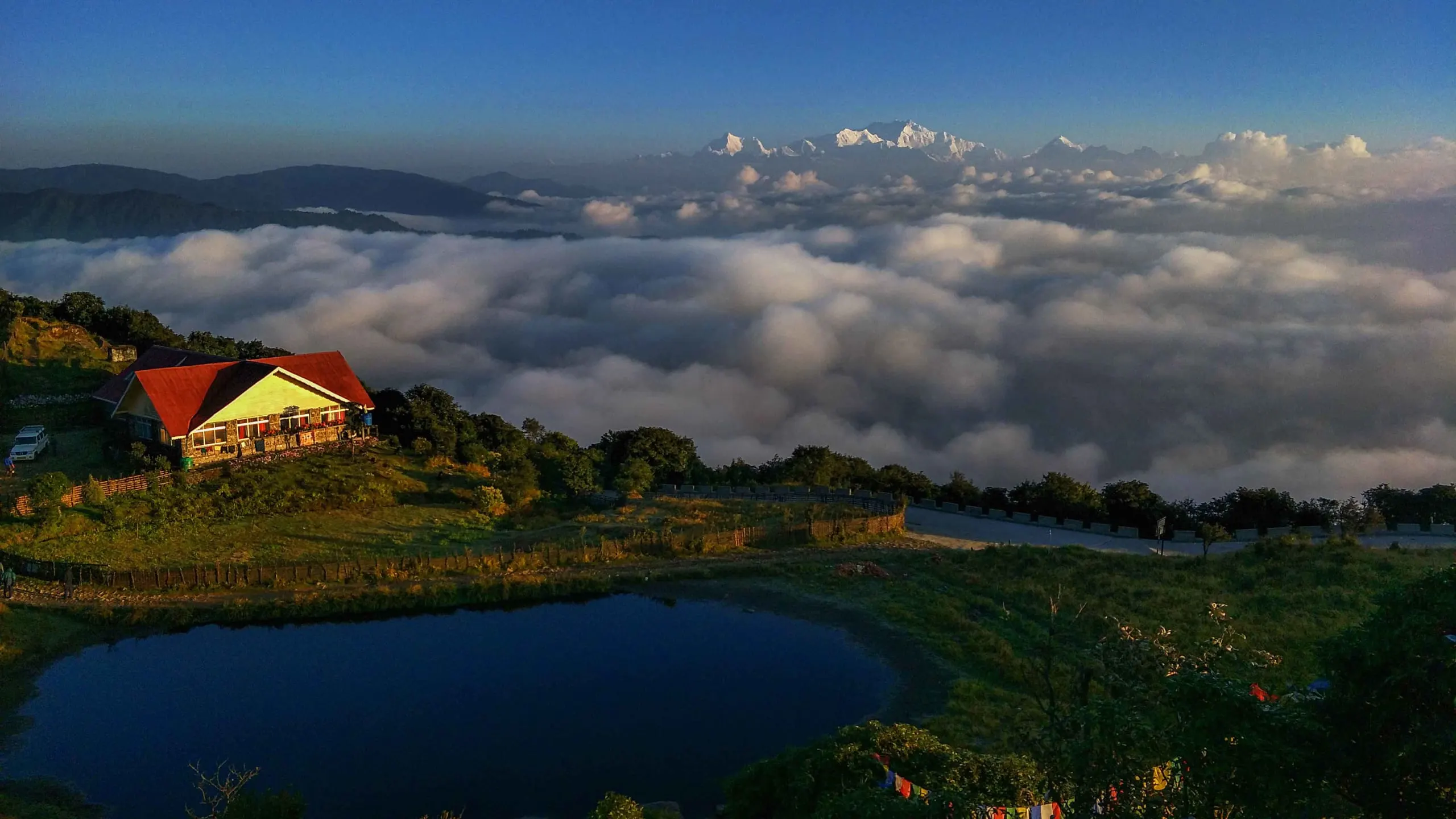
Singalila National Park, located in the Darjeeling district of West Bengal, is a paradise for nature lovers, trekkers, and wildlife enthusiasts. Perched at an altitude of over 7,000 feet, the park is famous for its panoramic views of the Himalayan ranges, including four of the world’s highest peaks – Mount Everest, Kanchenjunga, Lhotse, and Makalu. The park is also the final stretch of the popular Sandakphu trek, offering a rare blend of natural beauty and adventure.
The park boasts a rich biodiversity, with dense forests of rhododendrons, magnolias, oaks, and bamboos. It is home to rare and endangered species such as the red panda, Himalayan black bear, clouded leopard, and a wide variety of birds, making it a birdwatcher’s haven. The blooming rhododendrons in spring turn the entire forest into a vibrant canvas of red, pink, and white, attracting photographers and nature enthusiasts from across the globe.
Apart from wildlife, Singalila is a cultural delight. The trek through the park passes by small mountain villages inhabited by warm and hospitable communities, mainly Sherpas and Nepalis, offering glimpses into their traditional lifestyles. The park’s location along the Indo-Nepal border also allows trekkers to walk in and out of both countries during the journey, adding a unique international twist to the adventure.
Best time to visit: March to May and October to December
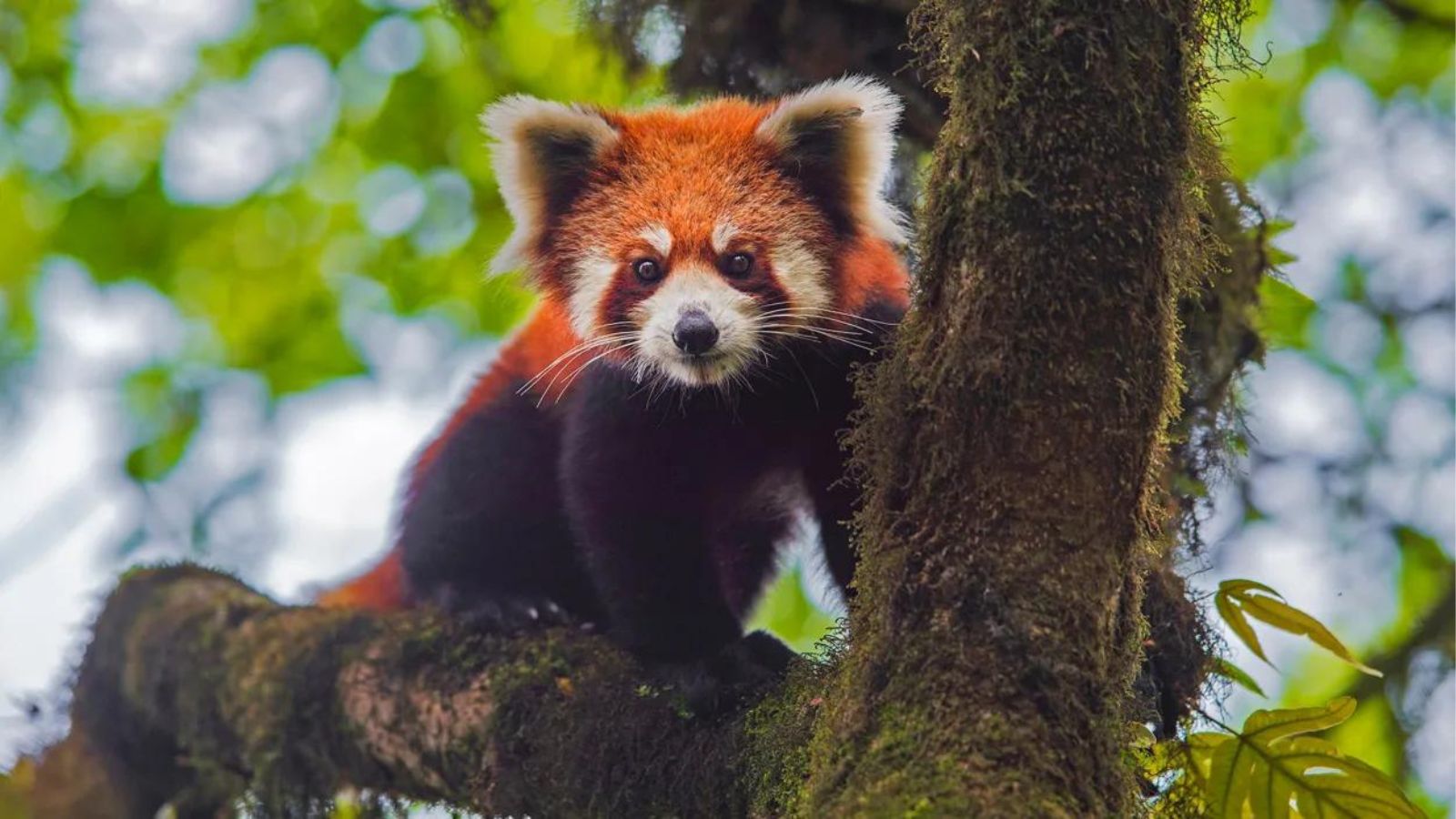
Khangchendzonga National Park, a UNESCO World Heritage Site, is one of India’s most stunning and biodiverse protected areas, located in the state of Sikkim. Spanning an area of over 1,700 square kilometers, it is home to Mount Khangchendzonga, the third-highest peak in the world. The park offers spectacular landscapes ranging from lush valleys and pristine lakes to snow-capped mountains and glaciers, making it a paradise for trekkers, nature lovers, and spiritual seekers.
The park’s rich biodiversity includes rare and endangered species such as the snow leopard, red panda, musk deer, Himalayan tahr, and over 500 species of birds. Its diverse vegetation ranges from sub-tropical forests to alpine meadows, creating an awe-inspiring environment that changes with altitude. Visitors can also find several sacred sites within the park, which hold great significance for the local Sikkimese people, blending natural beauty with cultural heritage.
Visiting Khangchendzonga National Park is more than just a nature trip—it’s an immersive journey into the heart of the Eastern Himalayas, where pristine wilderness meets deep cultural traditions. The park’s sheer beauty and ecological importance make it a must-visit destination for travelers seeking an authentic Himalayan experience.
Best time to visit: March to May and October to December
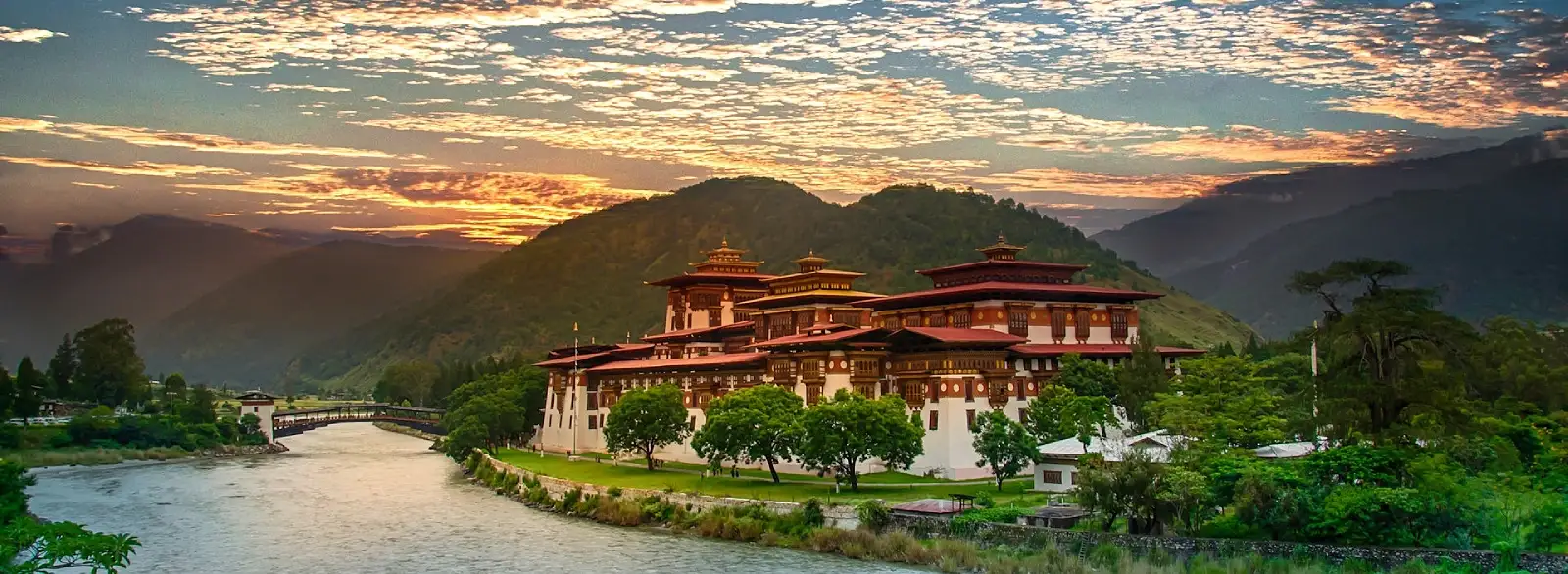
Thangu is a picturesque high-altitude village located in North Sikkim, around 30 kilometers from Lachen, and serves as a gateway to several famous destinations like Gurudongmar Lake and Chopta Valley. Situated at an altitude of approximately 13,000 feet, it is surrounded by snow-covered peaks, alpine meadows, and gushing streams, making it a serene and refreshing escape from city life. The charm of Thangu lies in its raw, untouched beauty and the simplicity of its local culture.
Thangu also serves as a base point for acclimatization before heading to higher altitudes like Gurudongmar Lake. Adventure lovers and trekkers often include it in their itineraries for short hikes and nature walks around the area. The crystal-clear waters of the Teesta River, which flows nearby, further enhance the peaceful charm of the place.
Best time to visit: May to June and October to November

The Teesta River is one of the most significant rivers in the eastern Himalayas, flowing through the Indian states of Sikkim and West Bengal before entering Bangladesh, where it joins the Brahmaputra. Originating from the Tso Lhamo Lake in North Sikkim, the river travels a distance of about 414 kilometers, passing through stunning valleys, deep gorges, and lush landscapes. Its turquoise waters and scenic surroundings make it a beloved sight for travelers.
The river holds immense importance for the people of the region, not only as a water source for irrigation but also for its role in hydroelectric power generation. Along its course, several dams and projects have been established, contributing to the energy supply of the surrounding states. It also supports a rich variety of flora and fauna, with its banks serving as habitats for both migratory and resident birds.
For adventure seekers, the Teesta River is a hub for water sports, particularly white-water rafting. The stretch between Melli and Kalimpong is especially popular among rafters, offering rapids of varying difficulty levels amidst breathtaking landscapes. Anglers and campers also find the riverbanks ideal for relaxation and nature-based activities.
Best time to visit: March to June and October to December
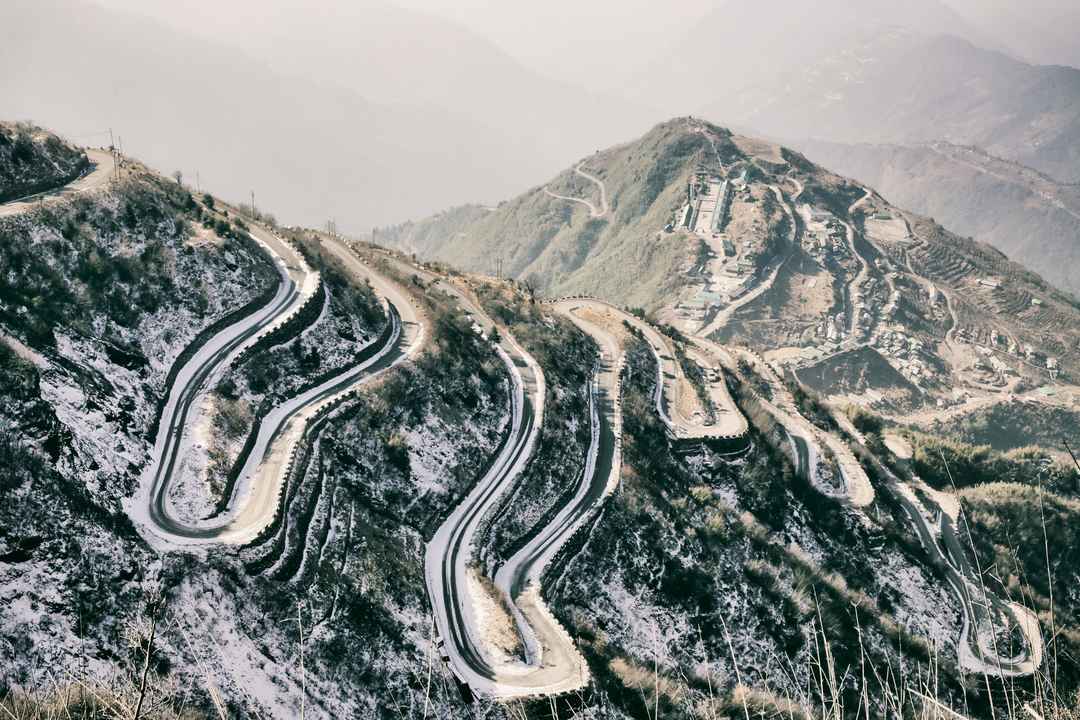
Zuluk, a small village in East Sikkim, is a hidden gem nestled at an altitude of around 10,000 feet on the historic Old Silk Route. Once a transit point for traders traveling between Tibet and India, Zuluk is now known for its breathtaking views of the Eastern Himalayas and the majestic Kanchenjunga. The village offers a raw, untouched charm, making it an ideal spot for travelers seeking offbeat destinations.
The winding roads of Zuluk, especially the famous zigzag loops with over 30 hairpin bends, are a visual treat and a photographer’s delight. From the Thambi Viewpoint near Zuluk, visitors can witness spectacular sunrises, with the first rays of the sun lighting up the Kanchenjunga range in golden hues. The entire region is rich in alpine vegetation and wildlife, offering a serene escape into nature.
During summer, Zuluk transforms into a paradise of wildflowers, while in winter, it turns into a snow-covered wonderland. Its strategic location also makes it a base for exploring nearby attractions like Nathang Valley, Kupup Lake, and Lungthung. The area holds historical and military significance, as it is close to the Indo-China border and home to an Indian Army base.
Zuluk remains less commercialized compared to other hill stations, allowing visitors to experience authentic local hospitality and culture. Whether it’s the thrill of traversing the Old Silk Route or simply soaking in the high-altitude tranquility, Zuluk offers an unforgettable Himalayan experience.
Best time to visit: August to September and January to April
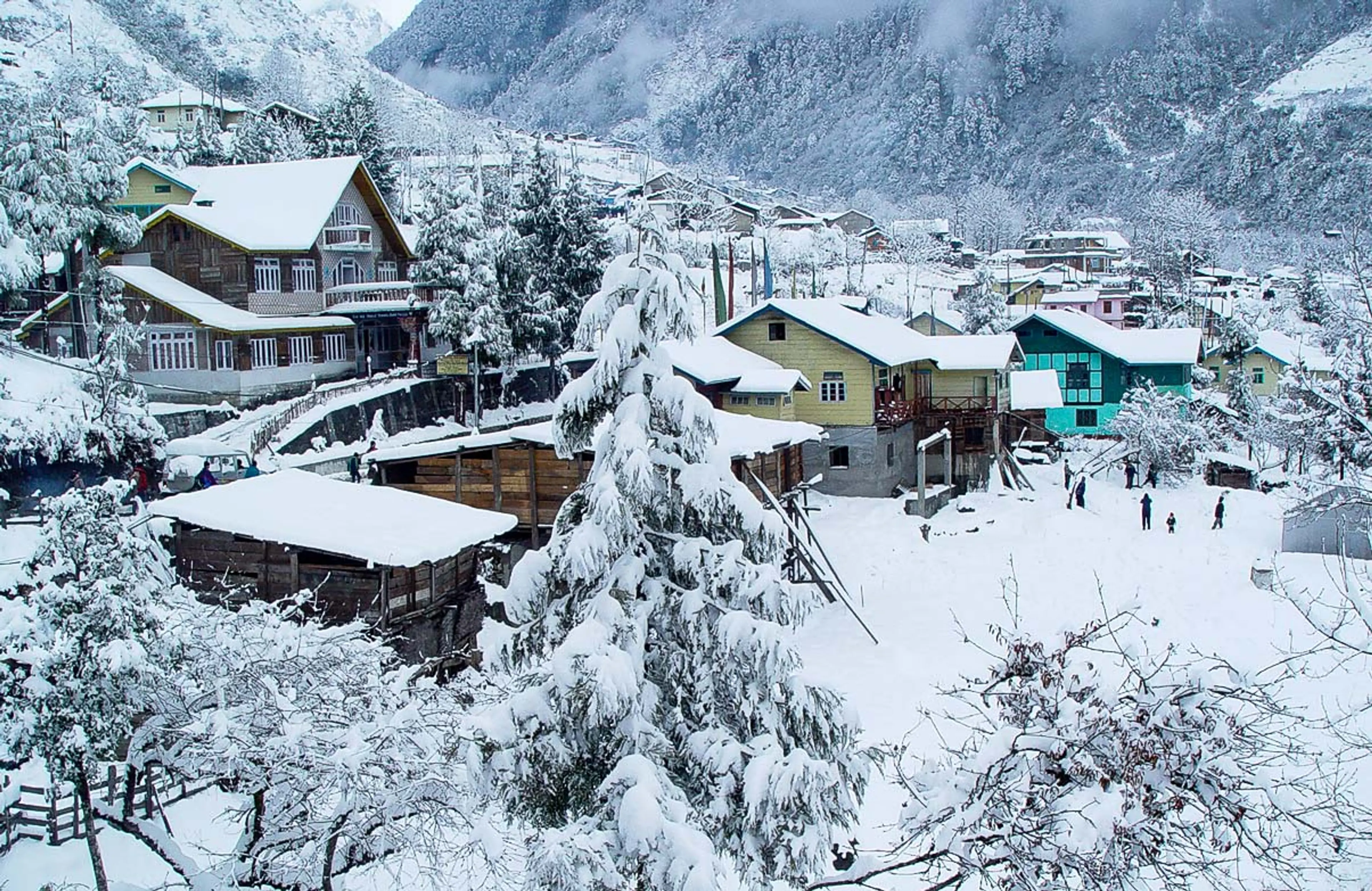
Lachung, nestled in the serene mountains of North Sikkim at an altitude of around 9,600 feet, is a charming village known for its stunning natural beauty and tranquil atmosphere. Surrounded by snow-capped peaks, lush pine forests, and crystal-clear rivers, Lachung offers an idyllic escape for travelers seeking peace and adventure alike. The village is a gateway to some of Sikkim’s most breathtaking destinations, including Yumthang Valley and Zero Point.
The village itself reflects the vibrant culture of the Lepcha and Bhutia communities, with traditional wooden houses, colorful prayer flags, and Buddhist monasteries dotting the landscape. Visitors can immerse themselves in local customs, enjoy warm hospitality, and savor authentic Sikkimese cuisine. The serene environment makes Lachung perfect for meditation, nature walks, and photography.
Lachung is also famous for its proximity to Yumthang Valley, also called the “Valley of Flowers,” which bursts into vibrant bloom during spring. The surrounding landscape features rhododendron forests, hot springs, and alpine meadows, making it a paradise for nature lovers and trekkers. During winter, the area transforms into a snowy wonderland, offering opportunities for snow activities and stunning winter vistas.
Whether you visit for cultural experiences, nature’s tranquility, or thrilling adventures, Lachung serves as a peaceful retreat that showcases the pristine beauty of Sikkim. Its unspoiled charm and breathtaking surroundings make it a must-visit destination in the Himalayas.
Best time to visit: March to June and October to November
